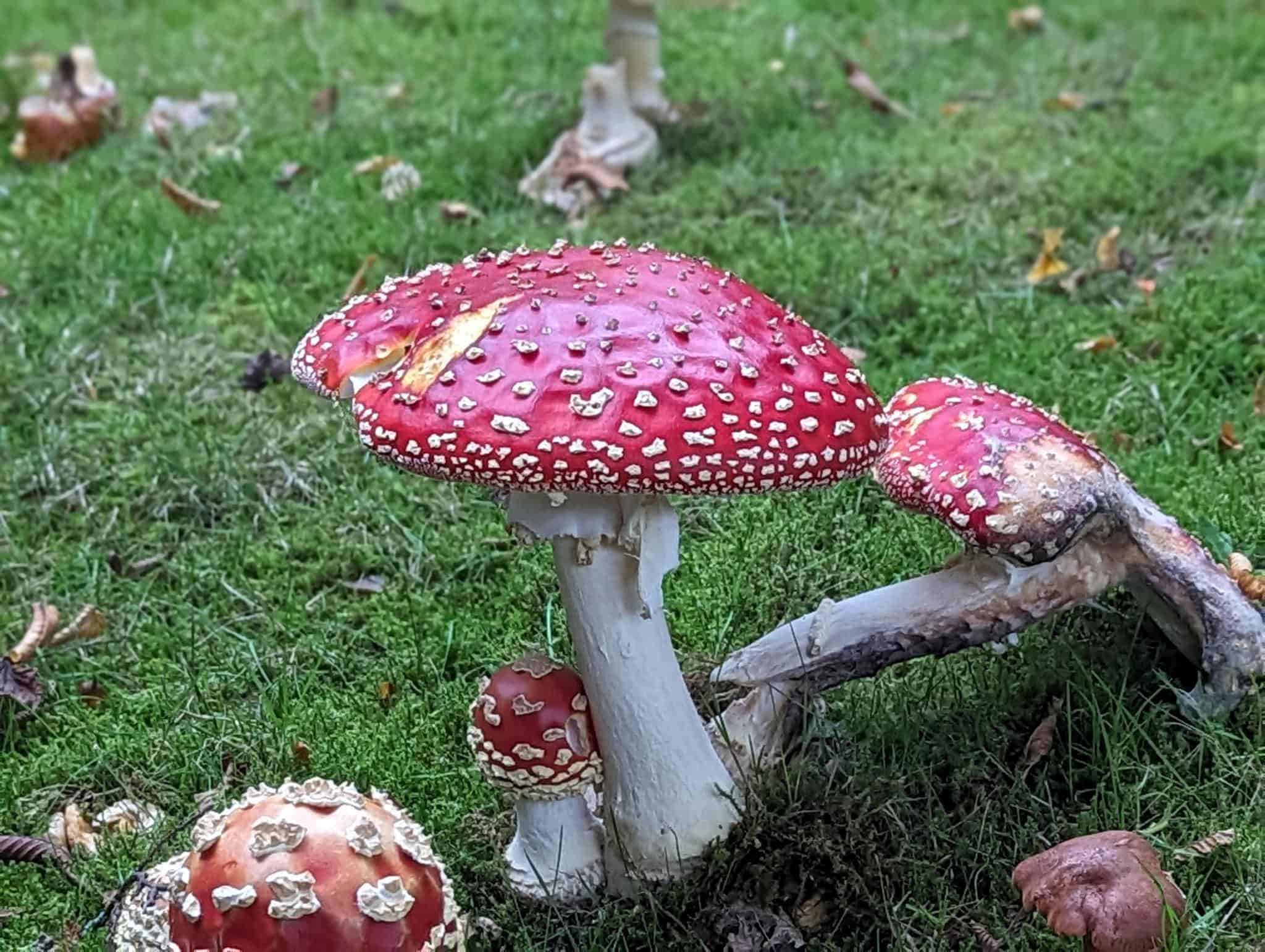When it comes to the complex world of fungi, misinformation can often sprout alongside curiosity. Amanita muscaria mushrooms, with their iconic red caps dotted with white spots, are frequently misunderstood and mistakenly lumped together with psychedelic mushrooms.
However, crucial distinctions set these two apart. Understanding these differences is essential for both the curious mycologist and the cautious enthusiast. Let’s address three important factors that delineate Amanita muscaria from its psychedelic counterparts – a classification that encompasses a variety of species like Psilocybe cubensis.
Navigating the Legal Landscape: Amanitas vs. Psychedelics
The legal framework surrounding mushrooms is knotted, akin to the way trails can suddenly blur in a dense forest. Amanita muscaria and psychedelic mushrooms such as Psilocybe cubensis present a puzzle of legality, each with its distinct legal standing that’s crucial for the outdoor enthusiast to understand.
When identifying these mushrooms in the wild – perhaps when you’re out on a hike – it’s not only essential to recognize which ones may be legally foraged but also which are safe if you find yourself stranded and consider them as sustenance.
Similar to how you’d familiarize yourself with steps to stay safe if lost while hiking, acknowledging the legislative environment of various fungi is just as critical. After all, knowledge of local flora could be a lifeline or a legal misstep when out traversing nature’s backyard.
So what’s legal, where, and why?
In the United States, the legal status of Amanitas is mostly permissive with notable exceptions that merit attention. For instance, while many states embrace their presence, Louisiana stands out with specific restrictions entrenched in State Act 159. There, unless you’re dealing with Amanita muscaria as an ornament, any cultivation, distribution, or ownership crosses into illegality – an essential piece of knowledge for residents or visitors to the Pelican State.
In sharp contrast, possession of Psilocybe species can lead to serious legal implications, given their psilocybin content – a substance strictly regulated under various international statutes. It’s a dichotomy that shapes not just personal choice but also scientific inquiry and medicinal exploration.
In some regions, recent shifts towards decriminalization of natural psychedelics for therapeutic uses have emerged. This wave of change posits a future where policy aligns closer with potential health benefits rather than blanket prohibition. Nevertheless, this evolving tapestry requires you to keep abreast of current laws – a simple misstep could mean straying onto the wrong side of legality.
Decoding Amanita Muscaria: Chemical Composition and Safety
The allure of Amanita muscaria on the forest floor belies its intricate chemical makeup, distinct from that of its psychedelic counterparts. While not a classic psychedelic, this versatile mushroom is known for raising serotonin levels, and innovative products like Amanita Muscaria gummies are now harnessing these effects.
Though it diverges in active compounds – primarily ibotenic acid and muscimol – its effects on mood and cognition confirm its unique standing within the mycological community.
Breaking down AME-1’s impact:
- Cognitive Functions: Psyched Wellness’ research has shown that AME-1 does not impair learning or memory.
- Motor Skills: The extract has no negative effect on motor coordination or balance.
- Ethanol Interaction: Even when used with ethanol, AME-1 maintains its non-disruptive profile.
This solidifies the mushroom’s safety and separates fact from folklore through scientific verification.
Contrasting active compounds:
Psychedelic Mushrooms:
- Psilocybin is the primary compound.
- Known for serotonergic activity; impacting mood and perception.
Amanita Muscaria:
- Ibotenic acid and muscimol are prevalent compounds.
- Targets GABA receptors, offering a distinct psychoactive experience.
Seizing knowledge from this vantage point allows us to appreciate how these substances diverge in influence on our systems – a foresight pivotal for anyone navigating the enigmatic territories of fungi.
Harnessing Therapeutic Potentials: Amanita Muscaria’s New Horizons
The therapeutic landscape is evolving, and with it, the role of Amanita muscaria mushrooms. Gone are the days when these red-capped entities were dismissed as mere novelties of nature. Advances in research are now unveiling their previously underestimated potential – transcending folklore to forge a path in modern wellness.
Psyched Wellness’ study not only confirms AME-1’s safety but also reveals its absence of adverse effects on behavior – an indication that could open doors for various applications. Moreover, earlier research indicating that this extract inhibits human mast cell activation sketches out prospects for treating inflammatory skin conditions. This is no small feat considering the global quest for novel anti-inflammatory agents.
But perhaps more intriguing are the implications for immune system support. In vivo findings hint at AME-1’s ability to prime our body’s defenses, enhancing response to pathogens – a timely consideration in an era where immunity garners headline attention.
These revelations suggest a horizon where Amanita muscaria might soon join ranks with other natural substances in ethnomedicine cabinets – not just as an enigmatic mushroom but as a bearer of tangible health benefits. With this newfound insight, one can envision a future where Amanitas serve both mind and body alike – a notion once fanciful now grounded in empirical evidence.


